Fuel Tank Replacement Front Tank
Removal Procedure
- Relieve the fuel system pressure. Refer to Fuel Pressure Relief .
- Raise the vehicle. Refer to Lifting and Jacking the Vehicle in General Information.
- Drain the fuel tank. Refer to Fuel Tank Draining .
- Remove the evaporative emission (EVAP) canister. Refer to Evaporative Emission Canister Replacement .
- Disconnect the EVAP vent pipe (3) at the fuel tank clip (5).
- Loosen the vent hose clamp (7).
- Disconnect the vent hose (6) from the fuel tank.
- Disconnect the fuel fill hose (2) from the fuel tank.
- With the aid of an assistant, support the fuel tank.
- Remove the fuel tank strap attaching bolts.
- Remove the fuel tank straps.
- Carefully lower the rear of the fuel tank slightly.
- Remove the fuel sender cover, on the suburban only.
- Disconnect the fuel feed, return, and evaporative emission (EVAP) pipes (1, 2, 3) at the fuel sender.
- Disconnect the fuel sender and the fuel pressure sensor electrical connectors.
- Remove the fuel tank.
- Place the fuel tank in a suitable work area.
- Disconnect the EVAP pipe from the fuel tank roll over valves (2, 4) and the retaining clips (1).
- Remove the fuel sender assembly from the fuel tank. Refer to Fuel Sender Assembly Replacement .
- Cap the fuel and EVAP pipes in order to prevent possible fuel system contamination.
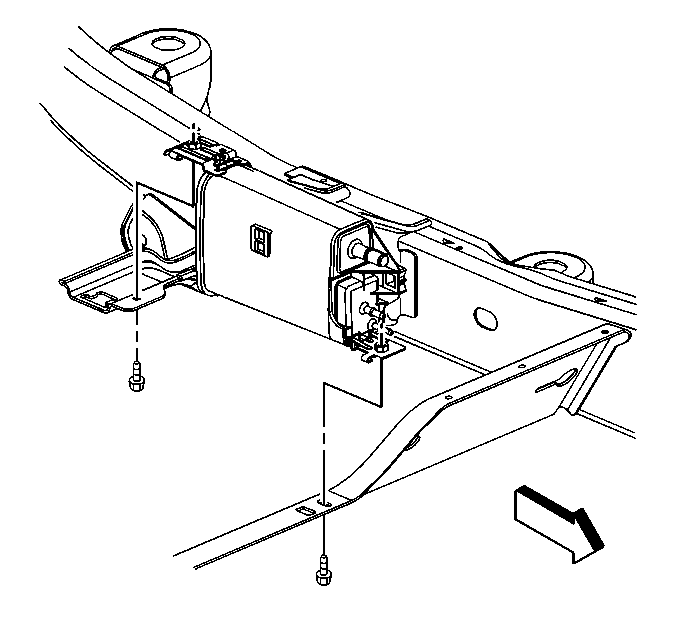
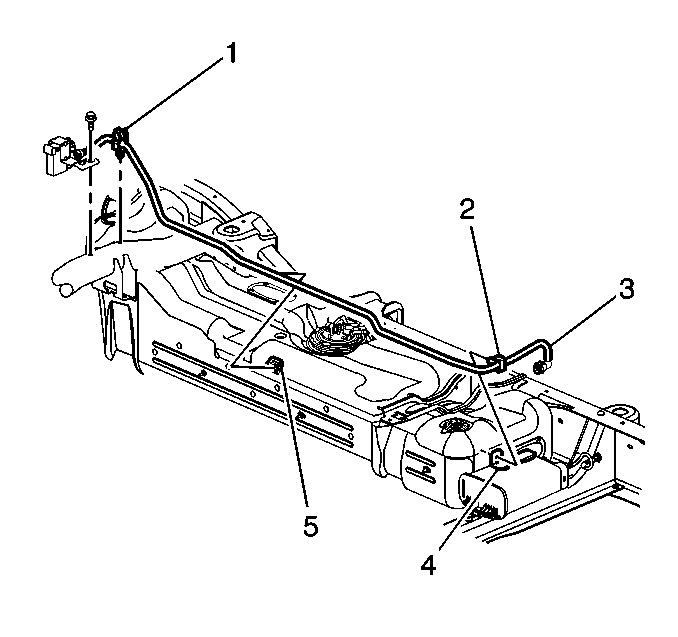
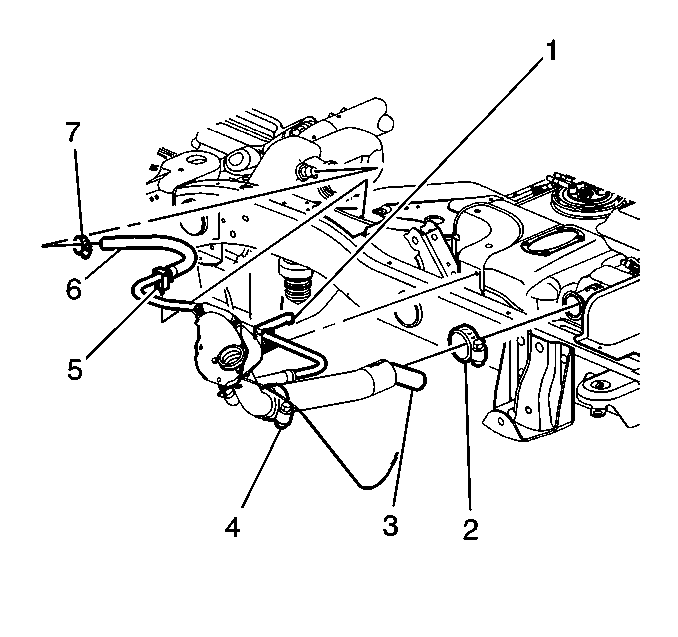
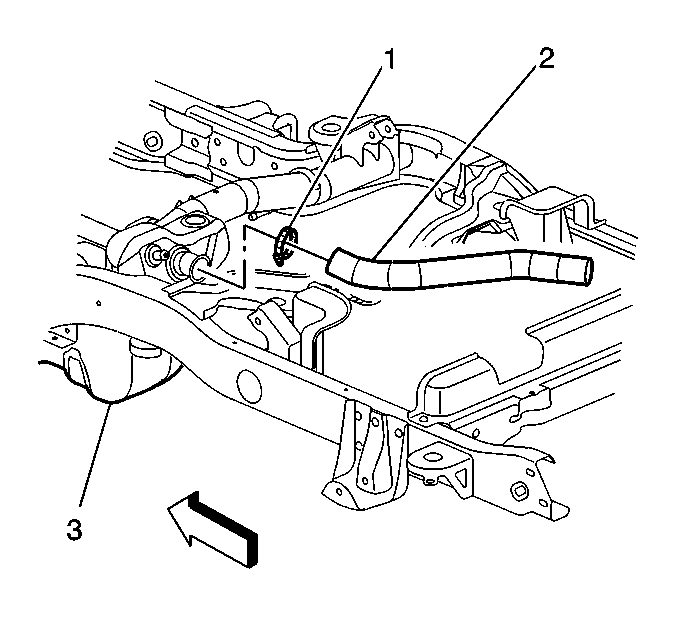
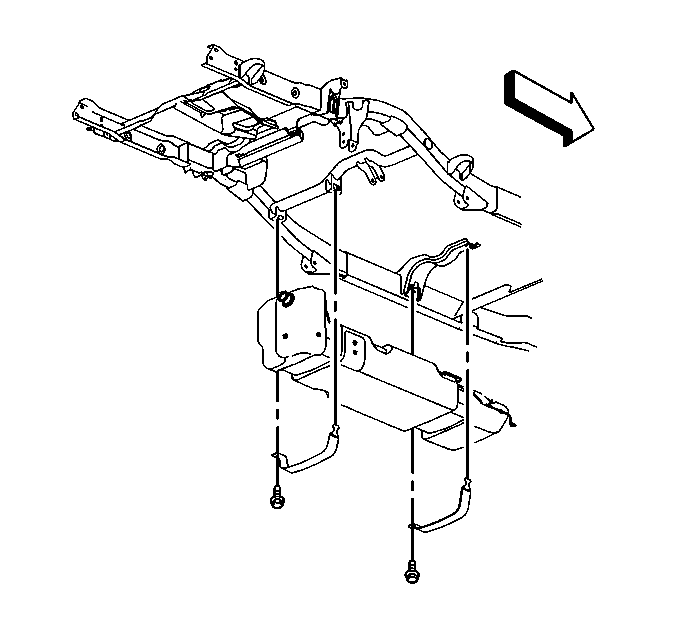
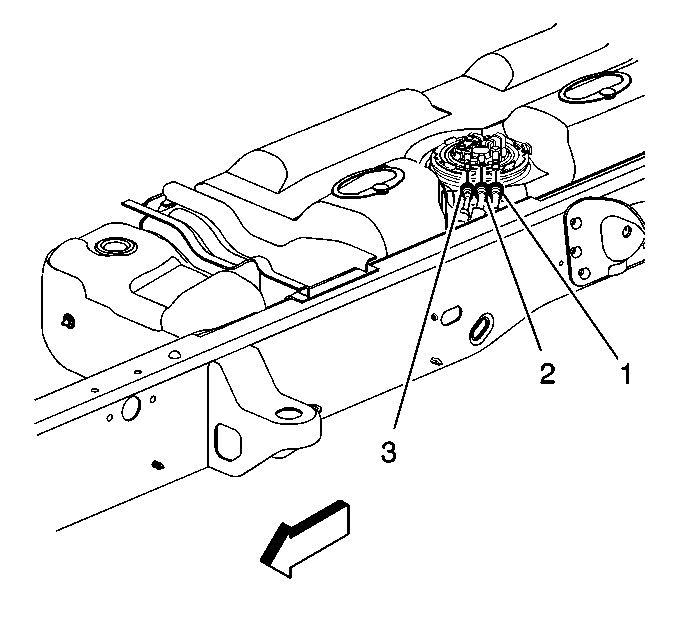
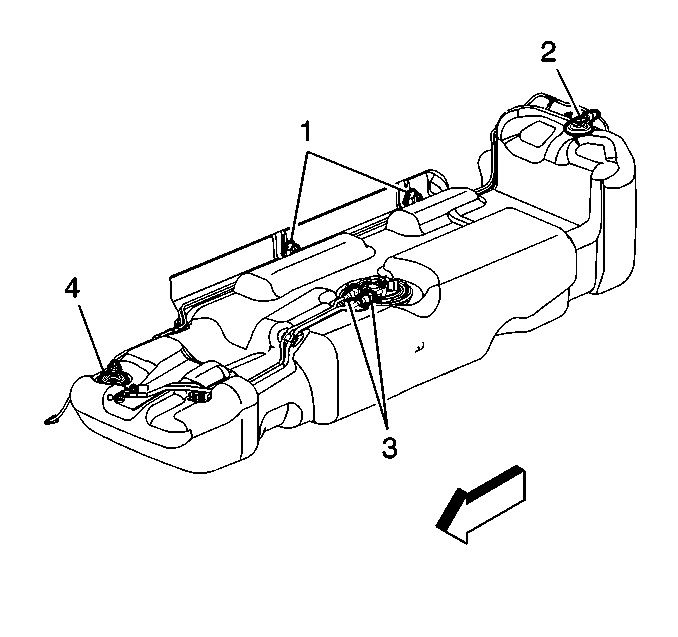
Installation Procedure
- Connect the EVAP pipe to the fuel tank roll over valves (2, 4) and the retaining clips (1).
- Install the fuel sender assembly to the fuel tank. Refer to Fuel Sender Assembly Replacement .
- With the aid of an assistant, support and partially raise the fuel tank front end first.
- Connect the fuel sender and the fuel pressure sensor electrical connectors.
- Connect the fuel feed, return, and EVAP pipes (1, 2, 3) at the fuel sender.
- Install the fuel sender cover, on the suburban only.
- Fully raise the fuel tank.
- Install the fuel tank straps.
- Install the fuel tank strap bolts.
- Connect the vent hose (6) to the fuel tank.
- Connect the fuel fill hose (2) to the fuel tank.
- Connect the EVAP vent pipe to the fuel tank clip (5).
- Install the EVAP canister. Refer to Evaporative Emission Canister Replacement .
- Lower the vehicle.
- Refill the fuel tank.
- Install the fuel filler cap.
- Connect the negative battery cable. Refer to Battery Negative Cable Disconnection and Connection in Engine Electrical.
- Inspect for leaks using the following procedure:
- Install the engine sight shield.



Notice: Use the correct fastener in the correct location. Replacement fasteners must be the correct part number for that application. Fasteners requiring replacement or fasteners requiring the use of thread locking compound or sealant are identified in the service procedure. Do not use paints, lubricants, or corrosion inhibitors on fasteners or fastener joint surfaces unless specified. These coatings affect fastener torque and joint clamping force and may damage the fastener. Use the correct tightening sequence and specifications when installing fasteners in order to avoid damage to parts and systems.
Tighten
Tighten the bolts to 40 N·m (30 lb ft).

Tighten
Tighten the vent hose clamp (7) to 2.5 N·m (22 lb
in)

Tighten
Tighten the fuel fill hose clamp (1) to 2.5 N·m (22 lb
in)


| 18.1. | Turn ON the ignition, with the engine OFF, for 2 seconds. |
| 18.2. | Turn OFF the ignition for 10 seconds. |
| 18.3. | Turn ON the ignition, with the engine OFF. |
| 18.4. | Inspect for fuel leaks. |
Fuel Tank Replacement Rear Tank
Removal Procedure
- Relieve the fuel system pressure. Refer to the Fuel Pressure Relief .
- Lower and remove the under chassis mounted spare tire.
- Raise and suitably support the vehicle. Refer to Lifting and Jacking the Vehicle in General Information.
- Remove the rear exhaust hanger bolts and hanger.
- Remove the rear crossmember that holds the spare tire.
- Drain the fuel tank. Refer to Fuel Tank Draining .
- Loosen the fuel tank filler hose clamp at the front tank.
- Remove the filler hose from the front tank, and reposition the hose towards the rear tank.
- Remove the fuel pipe ground strap bolt.
- Separate the ground straps (1, 2).
- Loosen the fuel tank fill vent hose clamp at the rear tank.
- Remove the fuel tank fill vent hose from the rear tank.
- Loosen the fuel tank filler pipe hose clamp at the rear tank.
- Separate the filler pipe from the rear tank.
- Loosen the vent hose clamp at the vent pipe.
- Remove the vent hose from the vent pipe.
- Lower the vehicle.
- Remove the fuel tank filler housing to body screws (1) and retainer (2).
- Remove the fuel tank filler housing to fuel tank filler pipe screws.
- Remove the fuel tank filler housing from the vehicle.
- Remove the fuel filler pipe from the vehicle.
- Raise the vehicle.
- Support the fuel tank with a suitable jack.
- Remove the fuel tank strap bolts.
- Remove the fuel tank straps.
- Partially lower the rear tank.
- Open the retaining clip.
- Remove the hose from the retaining clip.
- Remove the EVAP and fuel pipes from the retaining clip.
- Loosen the fuel tank filler hose clamp at the rear tank.
- Remove the filler hose from the rear tank.
- Disconnect the evaporative emission (EVAP) tubes (2) at the EVAP pipes.
- Disconnect the fuel pipe at the fuel sender (1). Refer to Metal Collar Quick Connect Fitting Service .
- Cap the fuel and EVAP pipes in order to prevent possible fuel system contamination.
- Disconnect the fuel tank electrical connector.
- Lower the fuel tank.
- With the aid of an assistant, remove the tank from the jack.
- Remove the fuel sender assembly, if required. Refer to Fuel Sender Assembly Replacement .
- Remove the EVAP pipes from the fuel tank roll over valves (1, 3) and the retaining clips (2), if required.
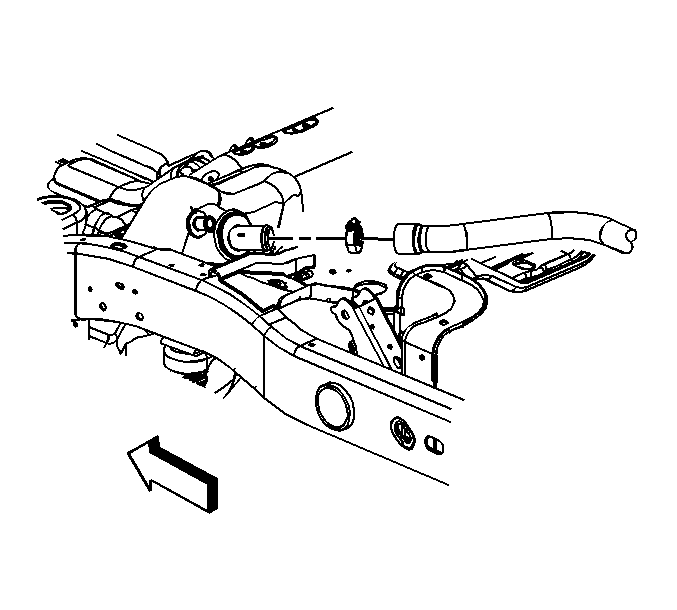
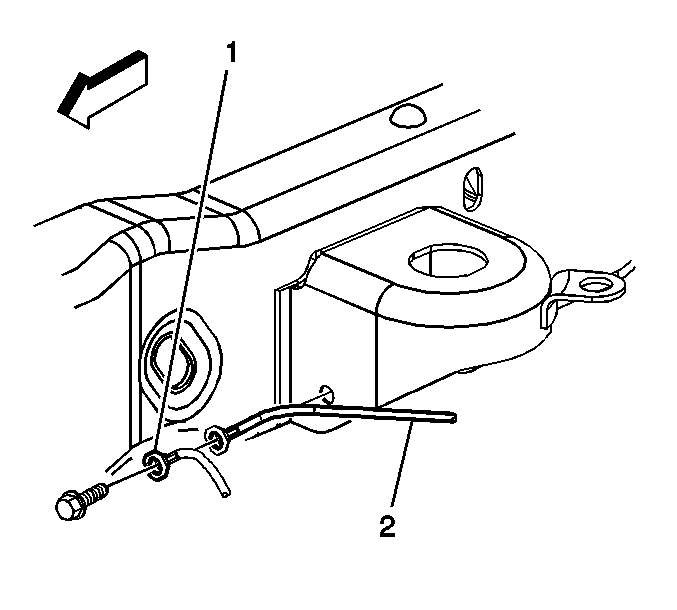

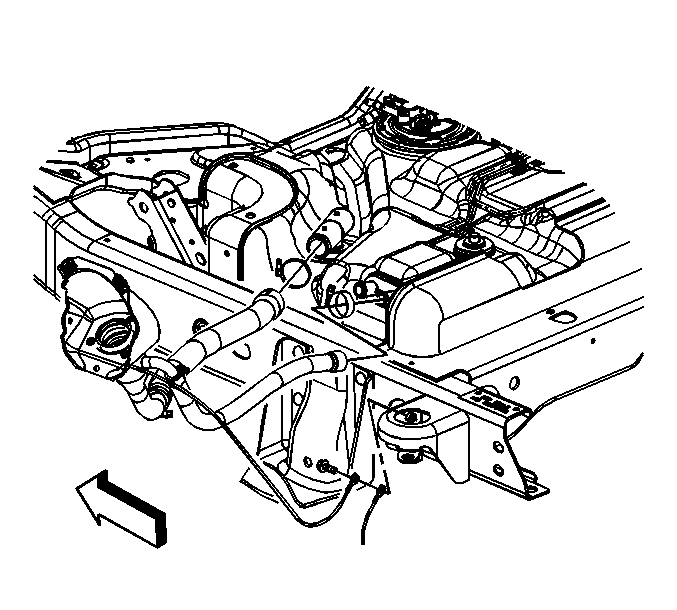
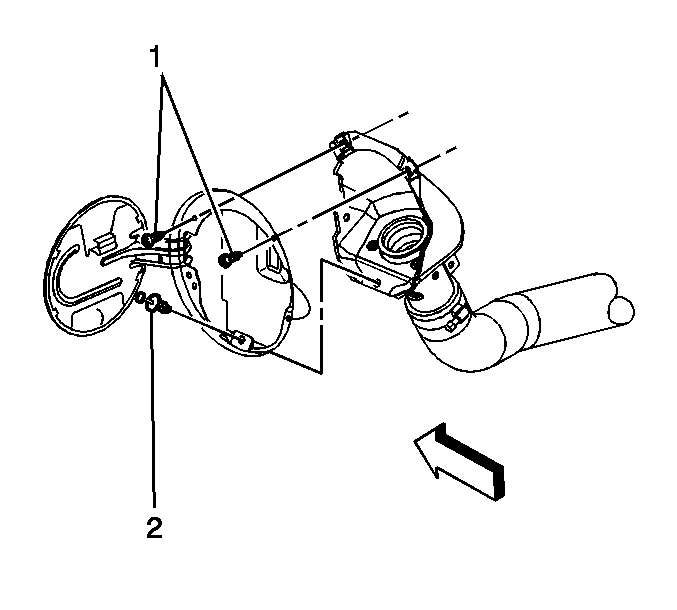
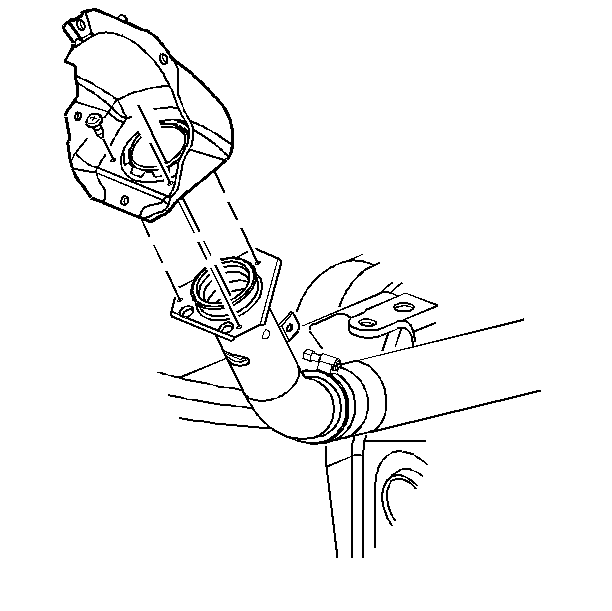
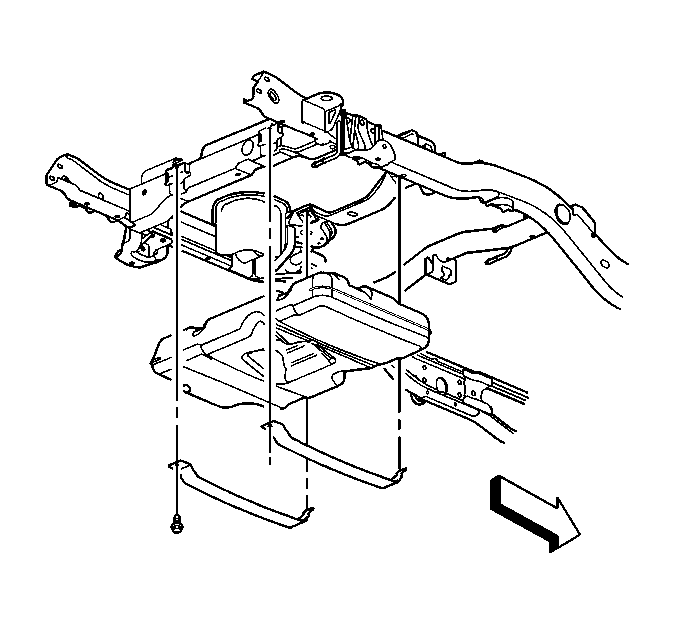
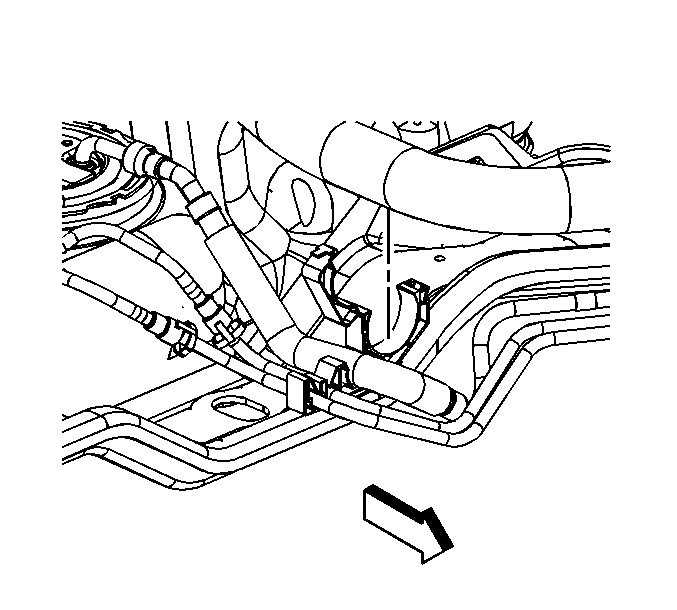
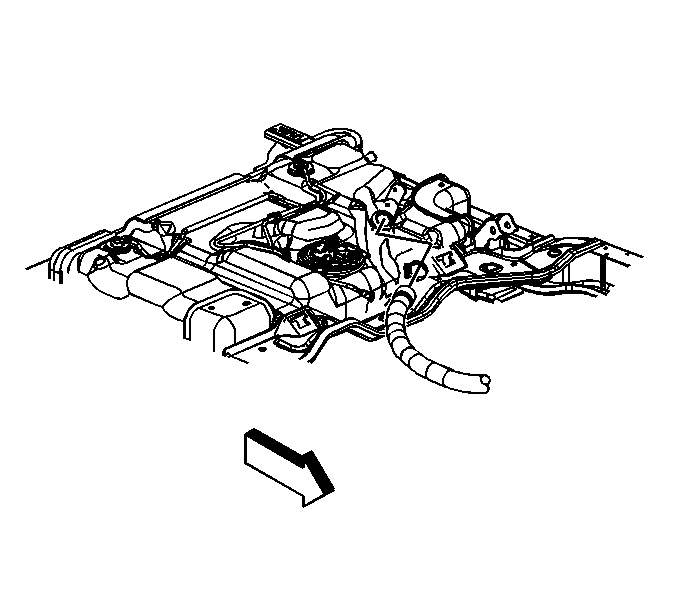
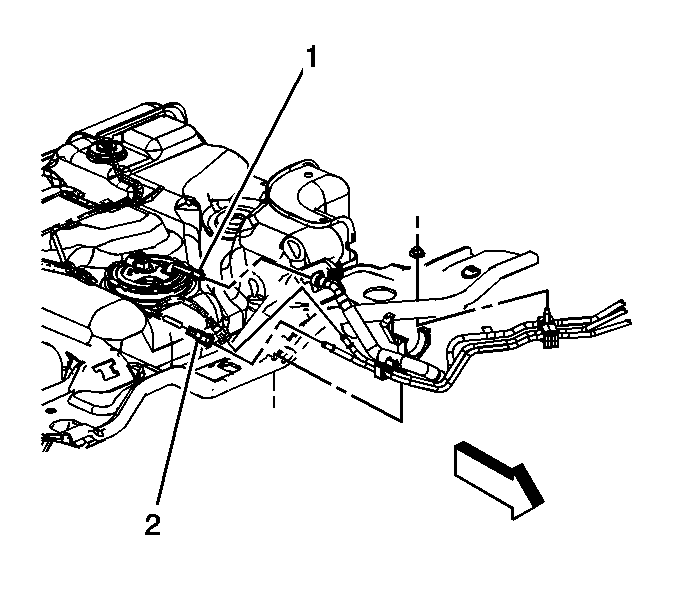
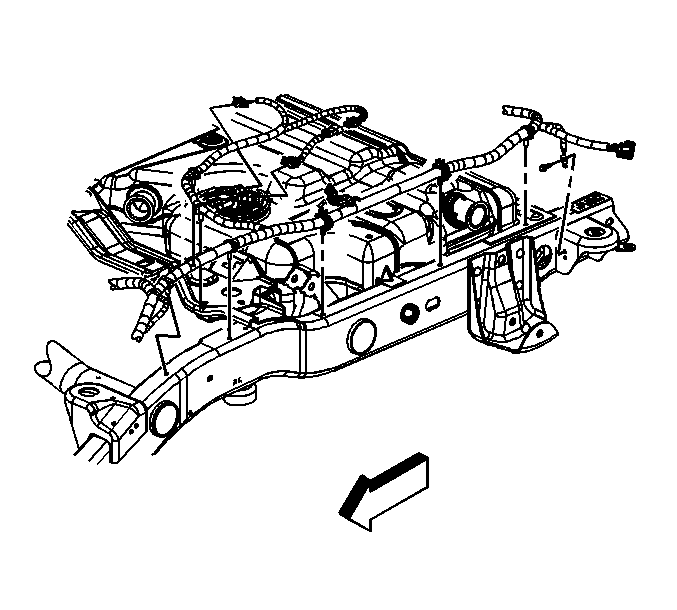

Installation Procedure
- Install the EVAP pipes to the fuel tank roll over valves (1, 3) and the retaining clips (2), if required.
- Install the fuel sender assembly, if required. Refer to Fuel Sender Assembly Replacement .
- With the aid of an assistant, install the tank to the jack.
- Partially raise the fuel tank.
- Connect the fuel tank electrical connector.
- Remove the caps from the fuel and EVAP pipes.
- Connect the fuel pipe at the fuel sender (1).
- Connect the EVAP tubes (2) at the EVAP pipes.
- Install the filler hose to the rear tank.
- Position the hose clamp downwards, for easy access.
- Tighten the fuel tank filler hose clamp at the rear tank.
- Install the EVAP and fuel pipes to the retaining clip.
- Install the hose to the retaining clip.
- Close the retaining clip.
- Completely raise and install the tank.
- Install the fuel tank straps.
- Install the fuel tank strap bolts.
- Remove the jack from the fuel tank.
- Lower the vehicle.
- Install the fuel filler pipe to the vehicle.
- Install the fuel tank filler housing to the vehicle.
- Install the fuel tank filler housing to fuel tank filler pipe screws.
- Install the fuel tank filler housing to body screws (1) and retainer (2).
- Raise the vehicle.
- Install the vent hose to the vent pipe.
- Tighten the vent hose clamp at the vent pipe.
- Connect the filler pipe to the rear tank.
- Tighten the fuel tank filler pipe hose clamp at the rear tank.
- Install the fuel tank vent hose to the rear tank.
- Tighten the fuel tank vent hose clamp at the rear tank.
- Align and position the chassis wiring harness ground strap (2) and fuel filler pipe ground strap (1).
- Install the fuel pipe ground strap bolt.
- Install the filler hose to the front tank.
- Tighten the fuel tank filler hose clamp at the front tank.
- Install the rear crossmember that holds the spare tire.
- Install the rear exhaust hanger and bolts.
- Lower the vehicle.
- Install and raise the under chassis mounted spare tire.




Notice: Use the correct fastener in the correct location. Replacement fasteners must be the correct part number for that application. Fasteners requiring replacement or fasteners requiring the use of thread locking compound or sealant are identified in the service procedure. Do not use paints, lubricants, or corrosion inhibitors on fasteners or fastener joint surfaces unless specified. These coatings affect fastener torque and joint clamping force and may damage the fastener. Use the correct tightening sequence and specifications when installing fasteners in order to avoid damage to parts and systems.
Tighten
Tighten the hose clamp to 2.5 N·m (22 lb in).


Tighten
Tighten the bolts to 40 N·m (30 lb ft).

Tighten
Tighten the screws to 2.3 N·m (20 lb in).

Tighten
Tighten the screws to 2.3 N·m (20 lb in).

Tighten
Tighten the hose clamp to 2.5 N·m (22 lb in).
Tighten
Tighten the hose clamp to 2.5 N·m (22 lb in).

Tighten
Tighten the hose clamp to 2.5 N·m (22 lb in).

Tighten
Tighten the bolt to 9 N·m (80 lb in).

Tighten
Tighten the hose clamp to 2.5 N·m (22 lb in).
